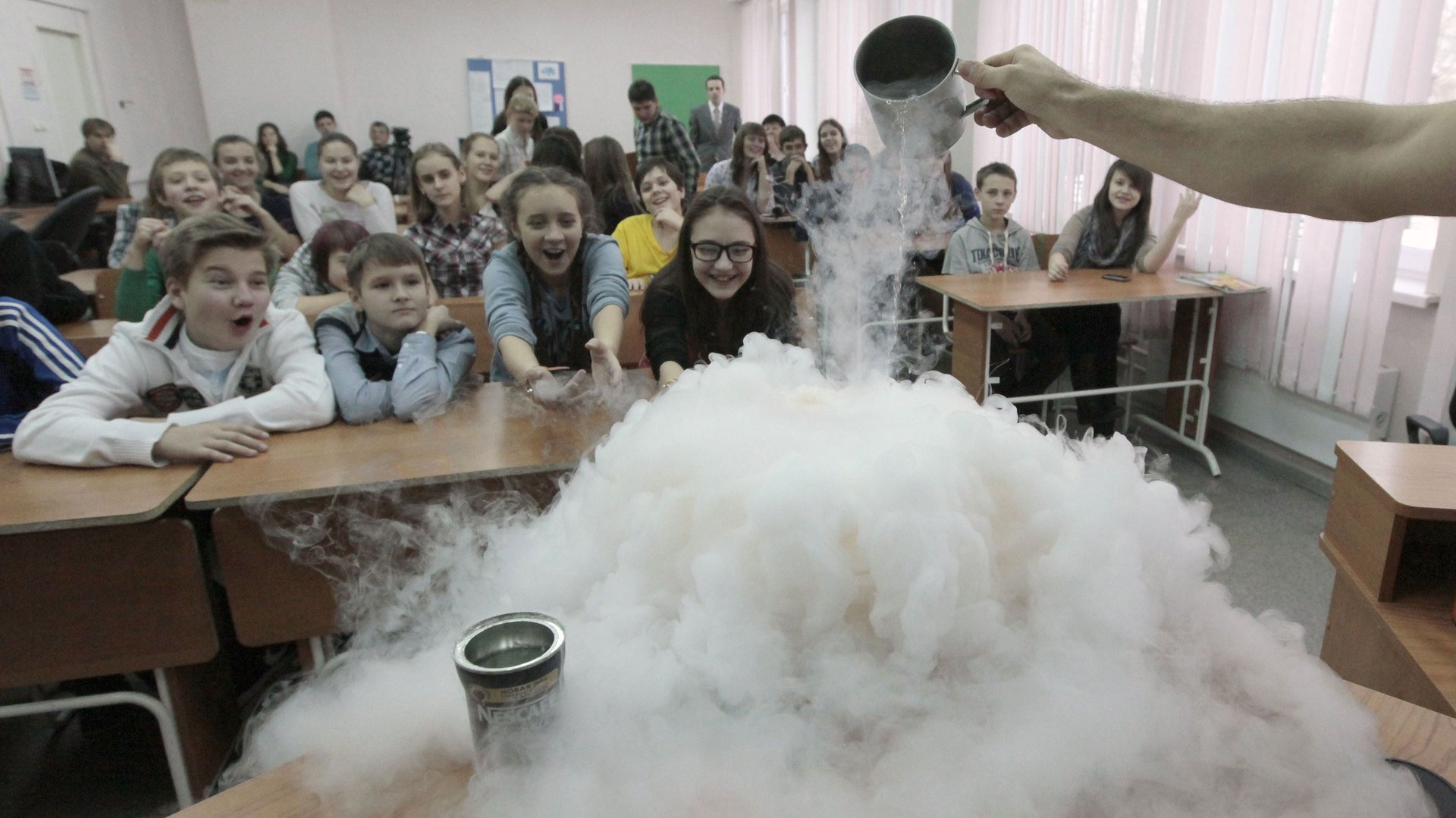How I convince teenagers to love STEM
I teach general chemistry at Bard College at Simon’s Rock, a residential early liberal arts college in the Berkshires of Massachusetts. Those who enroll in my course without taking chemistry in ninth or 10th grade do so with great trepidation. But they are my favorite students (don’t tell the others!) because they have no incorrect preconceptions I have to dislodge. They are diligent about carving out time to study chemistry from the start of the semester, since they perceive they are behind their classmates who took high school chemistry, and they have the lowest threshold of “wow moments” during classroom demonstrations or discussions.


I teach general chemistry at Bard College at Simon’s Rock, a residential early liberal arts college in the Berkshires of Massachusetts. Those who enroll in my course without taking chemistry in ninth or 10th grade do so with great trepidation. But they are my favorite students (don’t tell the others!) because they have no incorrect preconceptions I have to dislodge. They are diligent about carving out time to study chemistry from the start of the semester, since they perceive they are behind their classmates who took high school chemistry, and they have the lowest threshold of “wow moments” during classroom demonstrations or discussions.
And their classmates also get caught up in their wide-eyed response to adding two clear, colorless liquids together and seeing a bright yellow solid form in a test tube, or to seeing a green flame when boron salts burn in methyl alcohol or a magenta flame with lithium salts.
Some high school students may shy away from STEM “because it’s hard.” But isn’t any school of thought hard?
The task of learning a foreign language, especially one using a different alphabet; of interpreting the works of Shakespeare; of comprehending the history of civilization; or of predicting trends in the stock market is daunting. But any student who allows a “Wow!” to seep in discovers the next question is “Why?” The STEM student, impatient with any answer to “Why?” asks “What if…” and then changes the conditions of the wow-inducing event or observation in the laboratory of human experience.
And so this is how I “wow, why, and what if” my students into studying STEM.
1. Wow
In the first class of first semester general chemistry, I introduce students to the four things that science in general, and chemistry in specific, does:
- Science explains phenomena. Magic is for fantasy and Hogwarts, despite my husband’s contention that much of what I do in chemistry is magic.
- Science analyzes and identifies the make-up of things and how they work. While the expert CSI’s on television can identify some vile-looking goop recovered from a crime scene in a matter of seconds, analysis takes longer in real life but the results eventually come.
- Science makes new things. From genetically engineered E. coli bacteria that produce industrial quantities of insulin to the synthetic rubber of our shoe soles, new substances benefit (and, sometimes, are the bane of) our existence.
- Science builds the tools to do these three things: equipment and devices to explain and represent phenomena, to identify things, and to make new things.
2. Why?
I show to my students that studying STEM changes the way we think: It reassures us that there is a valid explanation for what is seemingly inexplicable. We are no longer beholden to the mysteries of terrifying eclipses nor fearful of sailing off the edge of a flat earth: There is a rational reason for everything, even if we don’t yet have the ability or devices to observe, measure, deduce, conclude, and explain—eventually, we will.
3. What if?
I explain to my students that STEM is a source of hope. It reassures us that in the future, maybe in our lifetimes, we will progress. We will, one day, learn how to prevent or cure cancer, eliminate polychlorinated biphenyls (PCB’s) from the environment, control greenhouse gas emissions, end hunger, and go faster-than-light through a wormhole to another galaxy. Maybe in our lifetimes the nature of dark matter and dark energy will be discovered.
As an educator, my most rewarding moments in the classroom or laboratory occur when a student claims, “That’s so cool.”